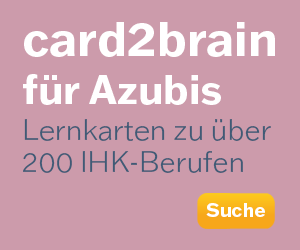Learning and Memory - Physiology for BME
Study material
Study material
Kartei Details
| Karten | 6 |
|---|---|
| Sprache | English |
| Kategorie | Biologie |
| Stufe | Universität |
| Erstellt / Aktualisiert | 14.11.2018 / 24.06.2021 |
| Lizenzierung | Namensnennung - Nicht-kommerziell - Keine Bearbeitung (CC BY-NC-ND) (Anina H. Degiacomi) |
| Weblink |
https://card2brain.ch/box/20181114_learning_and_memory_physiology_for_bme
|
| Einbinden |
<iframe src="https://card2brain.ch/box/20181114_learning_and_memory_physiology_for_bme/embed" width="780" height="150" scrolling="no" frameborder="0"></iframe>
|
Encoding types (memory)
Visual encoding
Elaborative encoding
Acoustic encoding
Semantic encoding
Other senses
Visual encoding
- process of encoding images and visual sensory information
- mental pictures
- temporarily stored within our iconic memory and working memory before being encoded into permanent long-term storage
- Baddeley's model of working memory: stored in the visuo-spatial sketchpad
- amygdala: complex structure with important role in visual encoding ---> accepts visual input in addition to input from other systems and encodes the positive or negative values of conditioned stimuli
Elaborative encoding
- process of actively relating new information to knowledge that is already in memory.
- Memories are a combination of old and new information ---> the nature of any particular memory depends as much on the old information already in our memories as it does on the new information coming in through our senses
- remembering something depends on how we think about it at the time
- long-term retention is greatly enhanced by elaborative encoding
Acoustic encoding
- aided by the concept of the phonological loop, which allows input within our echoic memory to be sub vocally rehearsed in order to facilitate remembering
---> When we hear any word, we do so by hearing to individual sounds, one at a time. Hence the memory of the beginning of a new word is stored in our echoic memory until the whole sound has been perceived and recognized as a word.
- lexical, semantic and phonological factors interact in verbal working memory.
- The phonological similarity effect (PSE), is modified by word concreteness (verbal working memory performance cannot exclusively be attributed to phonological or acoustic representation but also includes an interaction of linguistic representation)
(What remains to be seen is whether linguistic representation is expressed at the time of recall or whether the representational methods used (such as recordings, videos, symbols, etc.) participate in a more fundamental role in encoding and preservation of information in memory.)
Other senses
Tactile encoding:
- processing and encoding of how something feels, normally through touch
- Neurons in the primary somatosensory cortex (S1) react to vibrotactile stimuli by activating in synchronisation with each series of vibrations
- Odors and tastes may also lead to encode.
Organizational encoding
- course of classifying information permitting to the associations amid a sequence of terms.
---> In general encoding for short-term storage (STS) in the brain relies primarily on acoustic rather than semantic encoding.
Semantic encoding
- processing and encoding of sensory input that has particular meaning or can be applied to a context.
- Various strategies to aid: chunking and mnemonics
- Words studied in semantic or deep encoding conditions are better recalled as compared to both easy and hard groupings of nonsemantic or shallow encoding conditions with response time being the deciding variable




